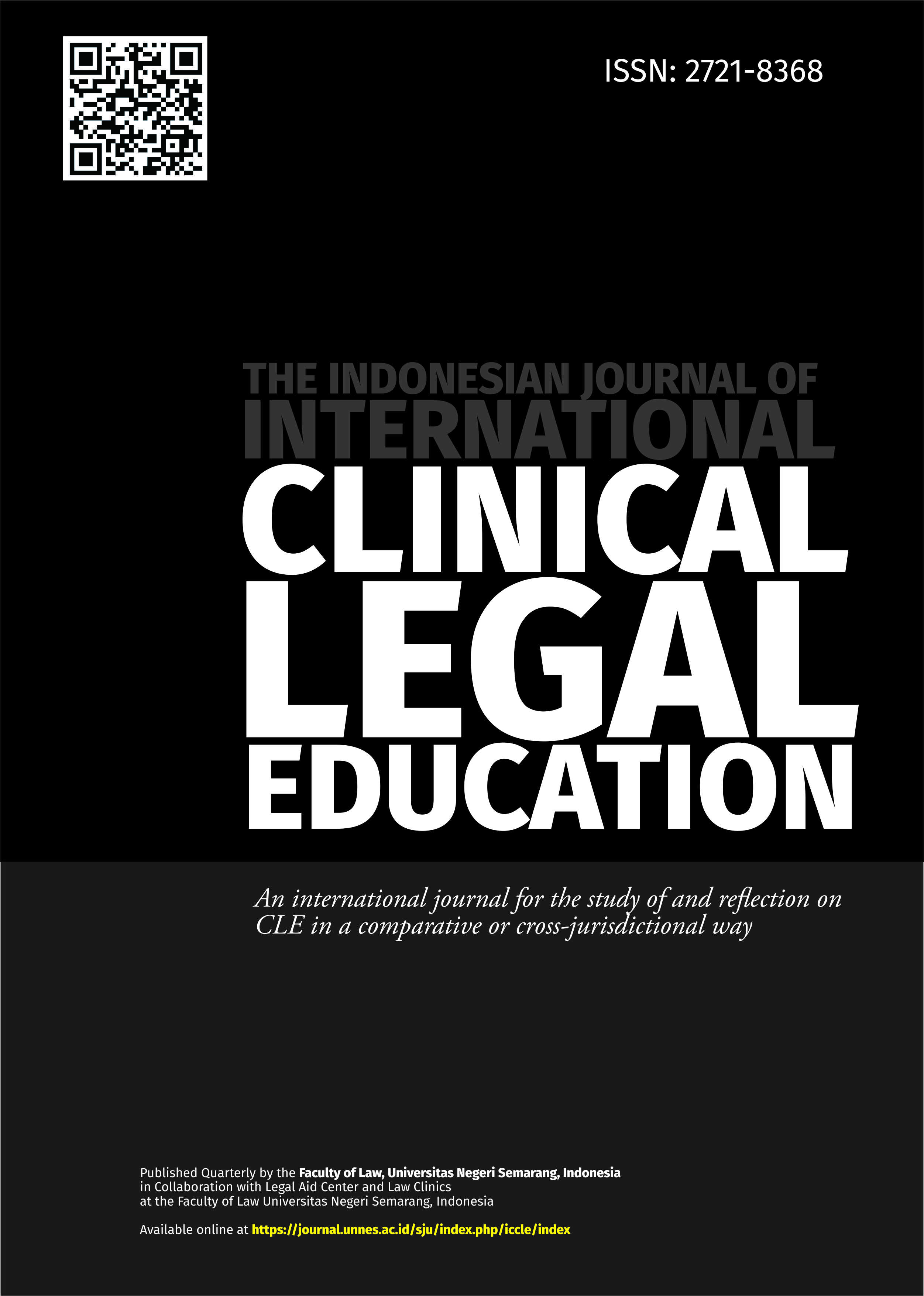Strain Theory Analysis on Wild Racing Cases in Indonesia: Legal and Criminological Aspect of Crime
Main Article Content
Abstract
This study delves into the application of strain criminology theory in the realm of wild racing, aiming to unravel the intricate dynamics that drive individuals to participate in this phenomenon. Strain theory posits that criminal behavior can emerge from the stress resulting from a disjunction between societal goals and available resources. In the context of street racing, this theory provides a lens through which to understand how individuals facing economic, social, or emotional pressures may find an outlet in engaging in illicit racing activities. Through a comprehensive secondary data analysis, incorporating case studies and relevant literature, this research endeavors to shed light on the role of strain criminology theory in the manifestation of wild racing. By examining various instances and drawing on existing knowledge, the study seeks to elucidate the underlying factors that contribute to the allure of street racing under conditions of strain. The ultimate goal is to deepen our understanding of the phenomenon and its implications for devising effective prevention strategies. The insights derived from this investigation hold significance not only in terms of academic understanding but also for practical applications in the field of law enforcement and social intervention. By grasping the nuanced interplay between strain and wild racing, policymakers and community leaders can develop targeted measures to alleviate the underlying stressors that may drive individuals towards engaging in this form of criminal behavior.
Article Details

This work is licensed under a Creative Commons Attribution-ShareAlike 4.0 International License.
The copyrights of the article in Indonesian J. Int'l Clinical Leg. Educ. is on the Author(s), however, before publishing, it is required to obtain written confirmation from Author(s) in order to ensure the originality (Author Statement of Originality). The statement is to be signed by at least one of the authors who have obtained the assent of the co-author(s) where applicable. This work licensed under a Creative Commons Attribution-ShareAlike 4.0 International (CC BY-SA 4.0). All writings published in this journal are personal views of the authors and do not represent the views of this journal and the author's affiliated institutions.
References
Goode, William J. "A theory of role strain." American sociological review (1960).
Purwandari, Eny. "Keluarga, kontrol sosial, dan “strain”: model delinquency remaja." Humanitas 8.1 (2011).
Merton, Robert K. "Social structure and anomie." American sociological review 3.5 (1938).
Agnew, Robert. "Foundation for a general strain theory of crime and delinquency." Criminology 30.1 (1992).
Akers, Ronald L. Criminological theories: Introduction and evaluation. Routledge, 2013.
Cullen, Francis T., Robert Agnew, and Pamela Wilcox. Criminological theory: Past to present: Essential readings. New York: Oxford University Press, 2006.
Hoffman, Kristi. "Criminological theories: Introduction, evaluation and application." Teaching Sociology 28.4 (2000): 403.
Williams, F. P. (2012). The Nature and Nurture of Illegal Street Racing. Deviant Behavior, 33(1).
Sullivan, Mercer L. "Illegal Leisure: The Normalization of Adolescent Recreational Drug Use/Understanding and Responding to Drug Use: The Role of Qualitative Research." Contemporary drug problems 28.1 (2001): 179.
Hagan, Frank E., and Leah E. Daigle. Introduction to criminology: Theories, methods, and criminal behavior. Sage Publications, 2023.
Cloward, Richard A., and Lloyd E. Ohlin. Delinquency and opportunity: A study of delinquent gangs. Routledge, 2013.
Williams, F. P. (2012). The Nature and Nurture of Illegal Street Racing. Deviant Behavior, 33(1).
Williams, F. P., & Fogle, J. A. (2006). The Role of Groups and Individuals in Street Racing Subcultures. Deviant Behavior, 27(3).
Smith, J. (2019). The Dangers of Illegal Street Racing. Safety.com. Retrieved from https://www.safety.com/illegal-street-racing/
National Highway Traffic Safety Administration. (2018). Street Racing. Retrieved from https://www.nhtsa.gov/risky-driving/street-racing
Graham, D. (2019). Street Racing: A Real Danger to Communities. The Balance Everyday. Retrieved from https://www.thebalanceeveryday.com/street-racing-4074067
Akers, Ronald L. "Rational choice, deterrence, and social learning theory in criminology: The path not taken." J. Crim. L. & Criminology 81 (1990).
Agnew, Robert. "Building on the foundation of general strain theory: Specifying the types of strain most likely to lead to crime and delinquency." Journal of research in crime and delinquency 38.4 (2001).
Hill, R. D., & Howell, J. C. (2003). Strain, Situational Ethics, and Street Crime: Extending Social Disorganization Theory. Justice Quarterly, 20(4).
Pogarsky, G., Lizotte, A. J., & Thornberry, T. P. (2006). Developmental Outcomes of Serious Adolescent Offenders. Journal of Research in Crime and Delinquency, 43(2).
Lynam, D. R., & Leukefeld, C. (1990). The Role of Economic Deprivation in Predicting Drug Use Behaviors. Drug and Alcohol Dependence, 26(3).
Agnew, Robert, and Helene Raskin White. "An empirical test of general strain theory." Criminology 30.4 (1992): 475-500.
Akers, Ronald L., and Gary F. Jensen. "The empirical status of social learning theory of crime and deviance: The past, present, and future." Taking stock (2017): 37-76.
Hirschi, Travis, and Michael Gottfredson. "Age and the explanation of crime." American journal of sociology 89.3 (1983): 552-584.
Piquero, A. R., & Moffitt, T. E. (2005). Pathways from Parental Authority to Delinquency: Results from the Pittsburgh Youth Study. Journal of Abnormal Child Psychology, 33(4), 477-488.
Agnew, Robert. "Pressured into crime: An overview of general strain theory." (2006).
Akers, Ronald L. Social learning and social structure: A general theory of crime and deviance. Transaction Publishers, 2011.
Williams, K. R. (1984). Deviance and Decentralization: The Case of "Street Racing". Social Problems, 31(4).
Brunelle, N., & Cousineau, M. M. (2012). Gendered Street Racing: An Analysis of Social, Cultural, and Environmental Factors. Journal of Contemporary Ethnography, 41(1).
Carroll, L. (2007). Street Racing and the Street Racer: Exploring the Contexts of Victimization. Western Criminology Review, 8(3).
Zuckerman, Marvin. Sensation seeking (psychology revivals): Beyond the optimal level of arousal. Psychology Press, 2014.
Katz, Jack. "Seductions of crime: Moral and sensual attractions in doing evil." (1988).
Durkin, K. F., & Bryant, C. D. (2000). Extending Social Identity Theory to Explain the Effects of Commitment, Involvement, and Motivation on Escalation of Violence. Communication Research, 27(6).
Carrington, K., & Pereira, A. (2019). The Bad Kids from Good Families: Youth Crime in Suburbs and Small Towns. University of Queensland Press.
